Austrian company Steambow recently released the Stinger 2 AR-6 pistol crossbow and sent me a review sample. The basics:
- $330 street price
- 2.6 lbs
- 22-25 inches long (25 with stock extended), 17 inches wide at limbs
- 6 bolt magazine capacity
- Picatinny mounting rails and AR-15 stocks/furniture
- 55 pound limbs (the arms that bend when cocked) that produce 180 feet per second shots with 5 inches of penetration in ballistic gel at short range
- Optional “pro” limbs at 90 pound draws, 220 fps, and 7 inch penetration — I did not have these limbs and this review is for the base model
- No regulations or other legalese to deal with.
Review summary:
- I’m glad this product exists and hope to see more focus put into the “crossbows for normal people’s prepping” category.
- Besides being recreationally fun, the Stinger mostly makes sense if you can’t or don’t want to have a firearm, yet still want to be able to hit targets on the other side of the room/house/yard instead of being limited to something like a baseball bat.
- The effective range is about 50 feet (15 m) in a self defense situation where you’re aiming at someone’s torso and about 25-30 feet (8 m) when hunting small game like rabbits.
- The limiting factor is accuracy, since you still have enough ‘power’ at 50+ feet but it becomes impractical to hit what you’re aiming at. The bolts do not always fly consistently, hit the target straight on, etc.
- Quality, value for money, etc. seems fine, although I’d like to see the overall cost (including the bolts you need) closer to $300-325. The build quality is roughly the same as the cheapest AR-15s, for example.
Is this a crossbow sweet spot?
I was excited to try the Stinger. Although I don’t have a lot of crossbow experience, I find them mechanically interesting and have wanted better answers when people ask about firearm alternatives.
It’s okay if you can’t or don’t want to have firearms. But self/home defense and hunting become much more difficult without guns because you can’t hit things far away from you. If you’re relying on a knife, pepper spray, or even a hunting trap, that requires getting very close to the target, which is harder or riskier.
Arrows are usually the best consistent way to put non-firearm projectiles down range. But, as discussed in TP’s roundup of the best survival bows, crossbows in particular usually aren’t a good choice. Traditional crossbows can be mechanically complicated, physically hard to cock, are heavy and bulky, expensive, don’t fire enough rounds quickly enough to help in a ‘tactical’ situation, etc.
Which means most normal folks don’t really engage with crossbows, leaving it to Hollywood badasses like Daryl from The Walking Dead or Katniss from The Hunger Games.
That’s why, over the last few years, a few companies have experimented with making crossbows more relevant for normal folks looking for something in between a toy and Hollywood.
So I’m happy to see companies like Steambow work on this category, hope it continues, and it does seem like they’ve accomplished their goal of making a more universally-accessible crossbow.
Ease of cocking is the biggest difference
One of the main ways companies are trying to innovate is by making it easier to actually load, cock, and fire a crossbow. Many traditional products use a separate cocking tool while you put the crossbow nose-down to the ground and use your feet as an anchor:
You cock the Stinger by pressing a thumb release lever where the stock meets the body, a natural position for your dominant hand. This ‘opens’ the Stinger so that you can fold it in half — imagine holding a long stick out in front of your body, parallel to the ground with arms extended and a hand on each end, and you squeeze your hands downward and inward to turn the stick into a frowny face. That’s the kind of motion used here.
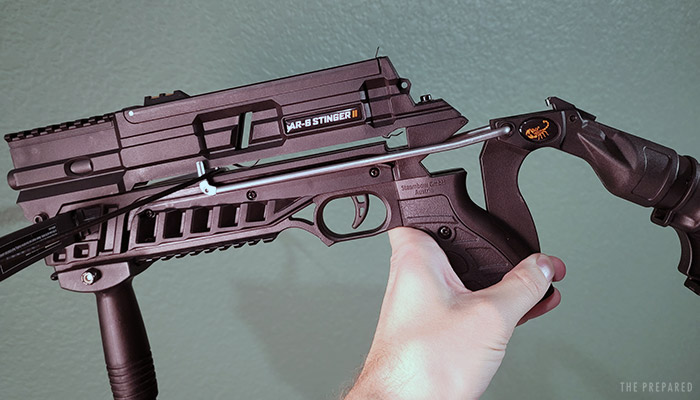
There’s a metallic arm running down each exterior side of the body. As you fold the device around the pivot point, the levers pull back, bringing the string along with them until the string falls into the retention notch just above the trigger.
I found this motion strange at first, but you get the hang of it. The vertical foregrip is an absolute must, because without it, you have no real point to grab and leverage as you’re doing this cocking motion.
The manufacturer told me they’ve seen people fire 6 shots in 4 seconds. I could see that being true, but it’s much more likely that, even with some practice, you’ll be around one shot every ~2 seconds at best.
Steambow did a good job of finding a sweet spot between ease of cocking vs. projectile power. Very weak or petite people who normally wouldn’t be able to fire a bow or hold up a rifle were able to handle this without problem.
But because the easier it is to cock, the less energy/spring there is behind the bolt, resulting in a weaker shot…
Accuracy and penetration are good enough for human/large targets 50 feet away and small animals 25 feet away
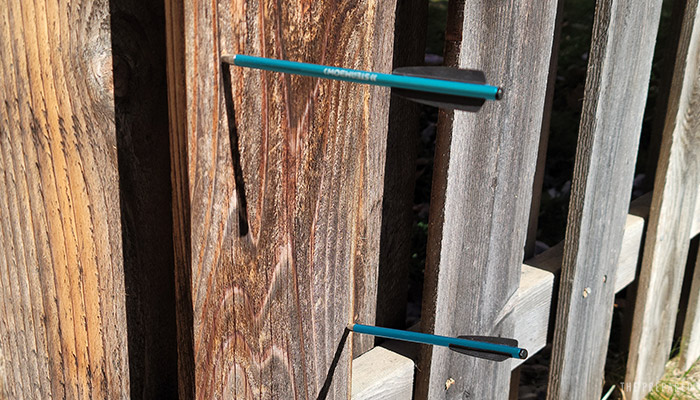
Using the standard 55-pound limbs, we found there was enough power to penetrate hard targets up to 75 feet (23 m) away.
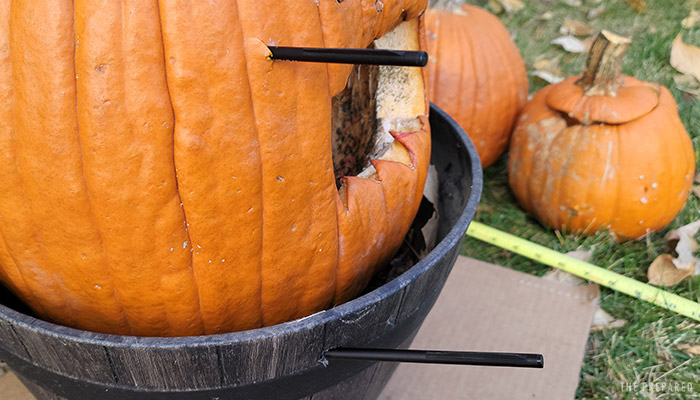
But you will not get sub-MOA groupings at any reasonable distance. The accuracy becomes loose enough past 50 feet that you’d struggle to keep your shots within a 12″ (30 cm) grouping. After all, these bolts are not traveling that fast — only about 20% of the speed of sound or 5% of an AR-15 bullet.
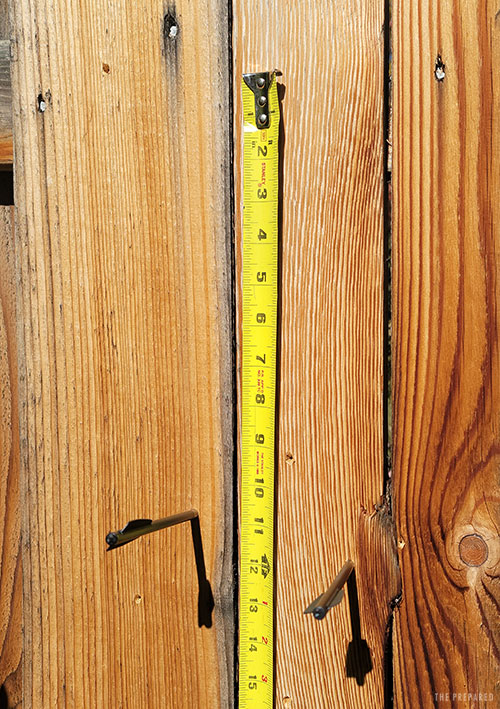
Think about when you’d actually rely on this crossbow; not just using it for fun. If you’re defending yourself from a person, you would aim for their “center mass”, and pretty much any hit in the torso would be a successful shot. But human torsos are much bigger than the center mass of a squirrel or rabbit, for example, and humans don’t randomly jump about and change directions the way small critters do.
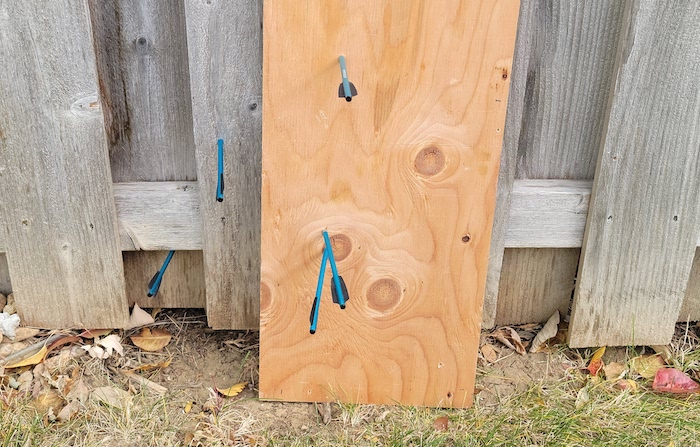
That’s why the effective range for small game hunting drops in half. If a squirrel was running sideways to you, up in a tree, 30+ feet away… it would take luck to make that shot, and we’d rather avoid depending on luck in survival.
One person who fired the Stinger felt it was difficult to line up the built-in sights because the thick body/frame really blocks your target window. One trick was to line up the front sight optic, then slowly angle up the rear sight until it’s lined up. For the same thick-body reasons, it was also difficult to visually track your shot as it flies down range.
Some other reviewers attached firearm optics to the Stinger. A magnified optic is overkill and probably won’t make you more accurate. But an unmagnified red dot could definitely help, especially if you struggle with the sight window without using an optic. If you do want to mount an optic, one store sells a magazine top plate with more picatinny rail space which brings the optic closer to your face.
There’s a housing built into the Stinger for a laser, and I think that could be worth it if you’re using this for home defense but aren’t that experienced with target shooting. For example, if you hear a bump in the night, grab your crossbow, and head to the top of the stairs, you could easily hit the intruder by using the laser and not bringing the device up to your cheek for a standard shot.
Here’s a hunter taking two feral hogs from maybe 20-25 feet away on an elevated tree stand using a broadhead bolt and laser:
Other notes
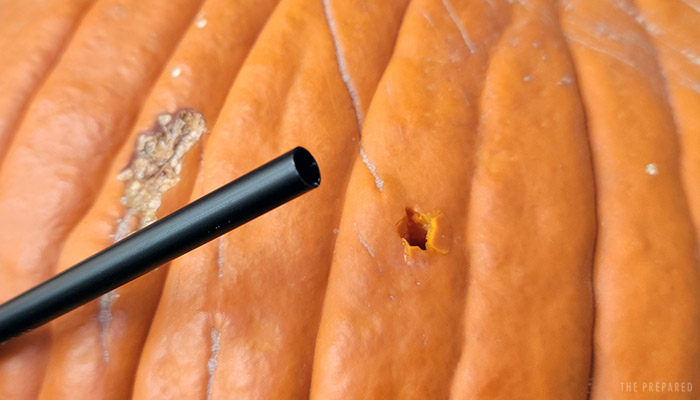
The bolts seem well made (for the price range) and come in a variety of styles: 140 grain practice (blue), 160 grain hardened steel (black), and broadheads. No real complaints. Thankfully they’re not plastic. But some bolts did get damaged when impacting a target on their first shot — so you shouldn’t expect ultra-durable bolts you’ll reuse forever. They were also very easy to lose in the grass/vegetation around a target.
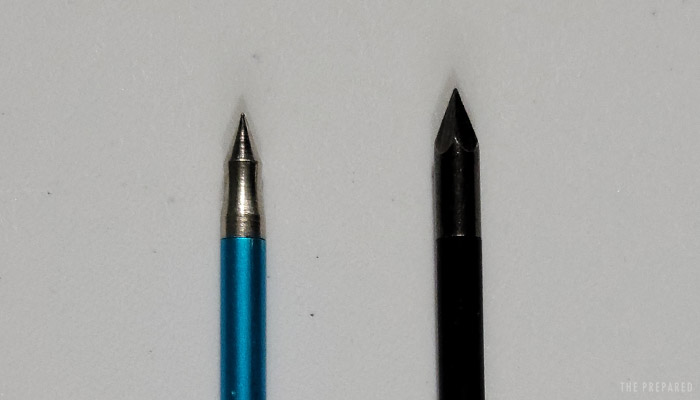
While the overall device is light, some of the plastic components feel a little cheap and wobbly. It’s not horrible or unusual for a $300 device, though — if you’ve bought or built a budget AR-15 before, it’s about that same level of quality. I suspect it will handle basic drops and bumps but not a high fall or using it as a club.
Although they’ve done a good job of making the Stinger 2 mechanically simple, it’s still not something you could easily service in the field. At least with common bows you could make a new limb out of wood or create a new string. But with this crossbow, once a part breaks, it’s dead.
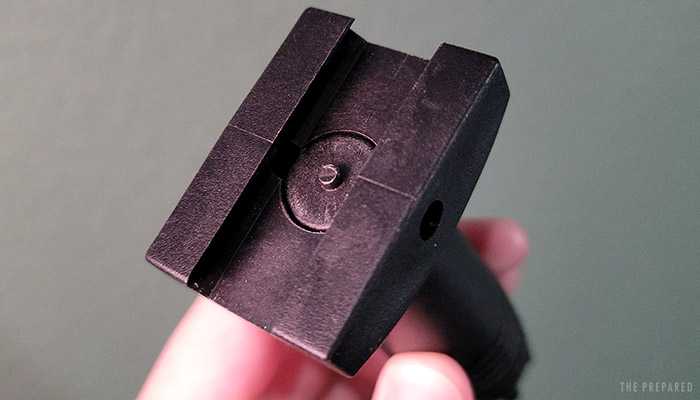
The included vertical foregrip is basic and seems standard, but instead of using a horizontal screw to hold it onto the mounting rail (as is normal for these kinds of parts), you tighten the screw cap on the bottom / ground-side of the foregrip, which pushes a retaining nipple up into the picatinny rail slot. I didn’t like that feature because the retaining nipple is too small, leaving too much wobble in the foregrip, which is a problem since you really depend on that foregrip to cock the weapon — if your life is counting on that motion, it better feel solid. So I think they should’ve just used a normal retention screw.
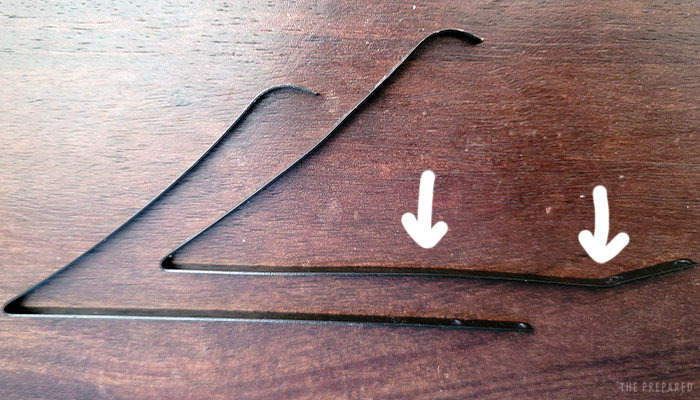
The main magazine spring bent easily when I first opened the package and started fiddling with the device. I was able to manually bend it back to the point it worked okay, and they did send a replacement. But I mention this because it could be easy to bend that spring if you’re not paying attention or moving quickly.
Here’s another decent review video:
https://www.youtube.com/watch?v=wSuumbTj1lE

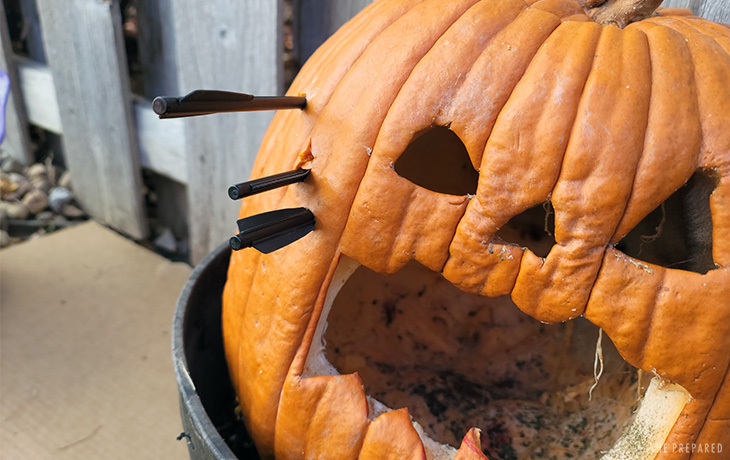
You are reporting the comment """ by on